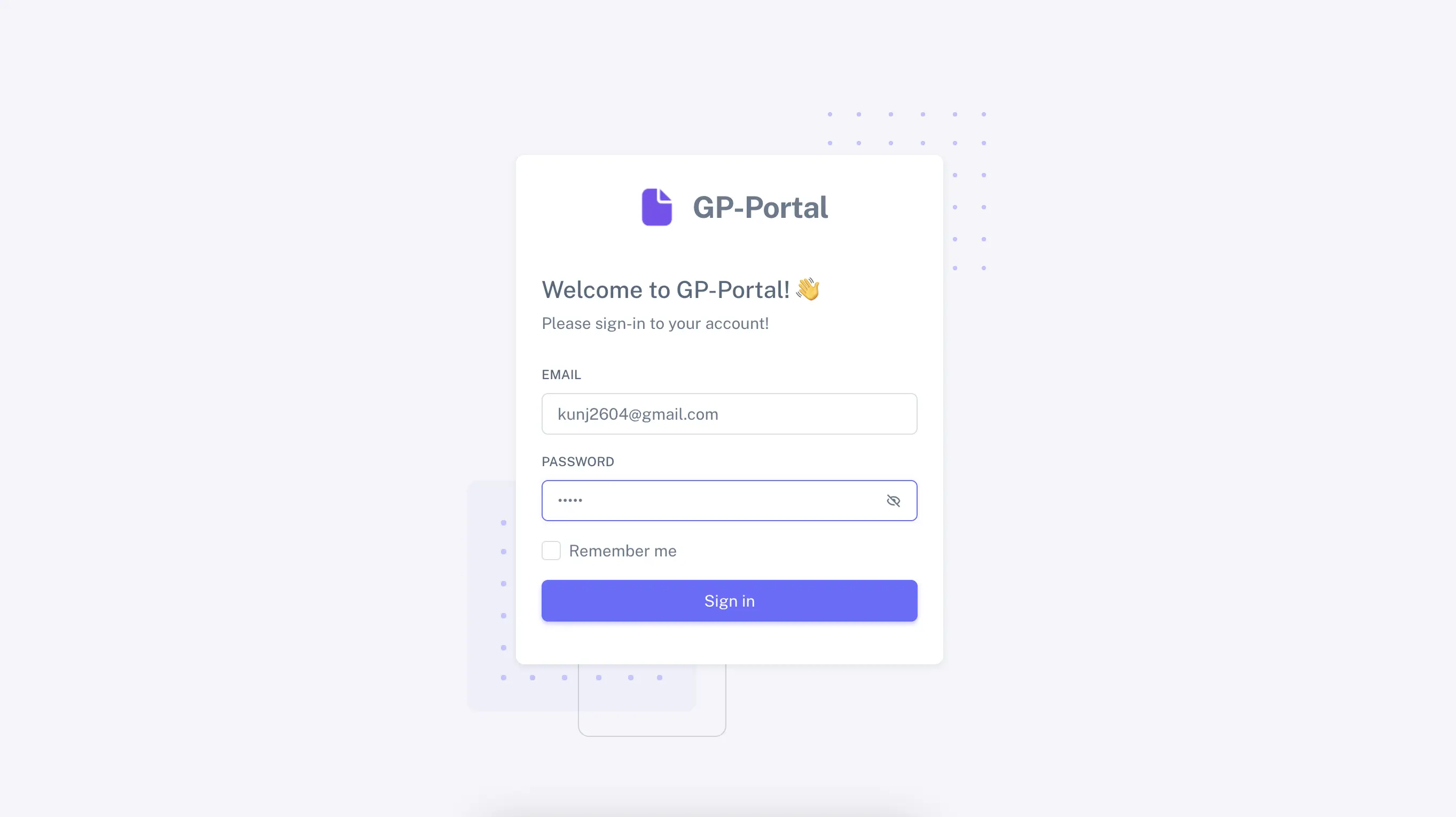GP-Portal
GP-Portal is a comprehensive QR code-based entry-exit pass system that I developed to enhance security management during events and gatherings. This project was created in 2022 to address the growing need for contactless and efficient access control systems.
Overview
The system allows event organizers to generate unique QR codes for attendees, which can be scanned at entry and exit points to track attendance and ensure security. The application provides real-time monitoring and detailed analytics for event management.
 GP-Portal Login screen
GP-Portal Login screen
Key Features
- QR Code Generation: Automatically generates unique QR codes for each attendee
- Real-time Scanning: Instant verification and logging of entry/exit events
- Database Management: Secure storage and retrieval of attendee information
- Analytics Dashboard: Comprehensive reporting and attendance analytics
- Security Features: Prevents duplicate entries and unauthorized access
- User-friendly Interface: Intuitive design for easy operation by event staff
Technical Implementation
Backend Architecture
The application is built using Flask, a lightweight Python web framework that provides excellent flexibility for rapid development. The backend handles:
- User authentication and authorization
- QR code generation using specialized APIs
- Database operations for attendee management
- Real-time data processing and validation
Database Design
MySQL was chosen for its reliability and performance in handling concurrent operations. The database schema includes:
- Attendee information tables
- Event management tables
- Entry/exit logs with timestamps
- Security audit trails
QR Code Integration
The system integrates with industry-standard QR code APIs to ensure:
- High-quality code generation
- Fast scanning capabilities
- Error correction and validation
- Cross-platform compatibility
Challenges and Solutions
Challenge: Real-time Performance
Problem: Ensuring fast QR code scanning and validation during peak entry times. Solution: Implemented efficient database indexing and caching mechanisms to reduce response times.
Challenge: Security Concerns
Problem: Preventing unauthorized access and QR code duplication. Solution: Implemented time-based validation, unique identifiers, and comprehensive logging.
Challenge: Scalability
Problem: Handling large numbers of concurrent users during events. Solution: Optimized database queries and implemented connection pooling.
Impact and Results
The GP-Portal system has been successfully implemented for various events, providing:
- 50% reduction in entry/exit processing time
- 99.9% accuracy in attendance tracking
- Zero security breaches since implementation
- Positive feedback from event organizers and attendees
Future Enhancements
- Mobile application development for attendees
- Integration with facial recognition systems
- Advanced analytics and predictive modeling
- Multi-language support for international events
- API development for third-party integrations
Technologies Used
- Backend: Python, Flask
- Database: MySQL
- QR Codes: QR Code APIs
- Frontend: HTML, CSS, JavaScript
- Deployment: Render.com
Getting Started
To set up the GP-Portal system locally:
- Clone the repository
- Install Python dependencies
- Configure MySQL database
- Set up environment variables
- Run the Flask application
The system is designed to be easily deployable on cloud platforms like Render, Heroku, or AWS.
Conclusion
GP-Portal demonstrates the practical application of modern web technologies to solve real-world security challenges. The project showcases skills in full-stack development, database design, security implementation, and system optimization.
This project has been instrumental in my understanding of production-level application development and has opened opportunities for similar security-focused projects in the future.